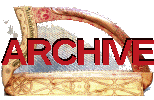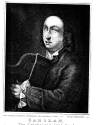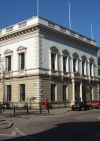
|

Carolan
At the start of the 18th century the Gaelic harp traditions were already in decline, although the first half of the century was when the most famous harpers of all were working: Turlough Carolan, Cornelius Lyons, and Rory Dall Morrison.
After Rory Dall's death, the Gaelic harp became extinct in Scotland - there was perhaps one or two other harpers who survived until about 1750.
In Ireland, perhaps due to a rising tide of nationalism, perhaps by having a larger area to travel round (including tours to Scotland), harpers managed to continue as itinerant musicians for a few generations longer. None of them composed new music after the mid 18th century, and many of them played up to date popular music as well as or instead of the older repertory.

Venue of
the 1792
meeting
By the 1780s there were very few harpers left at all, and a series of meetings were organised to raise awareness of the old harp music. After a series in Granard, a meeting was held in Belfast in 1792. Only ten harpers attended, mostly from the North of Ireland. Uniquely, arrangements were made for the music to be noted down. Edward Bunting was the young organist who was given this task, and amazingly his notebook that he used at the meeting and on subsequent field trips survives in Queens University Belfast, and images of it are available at their website. Bunting was fired up by what he heard, and spent much time collecting music and arranging it for publication. Without this flurry of work at the very end of the tradition, we would not be able to reconstruct the early Gaelic harp music.